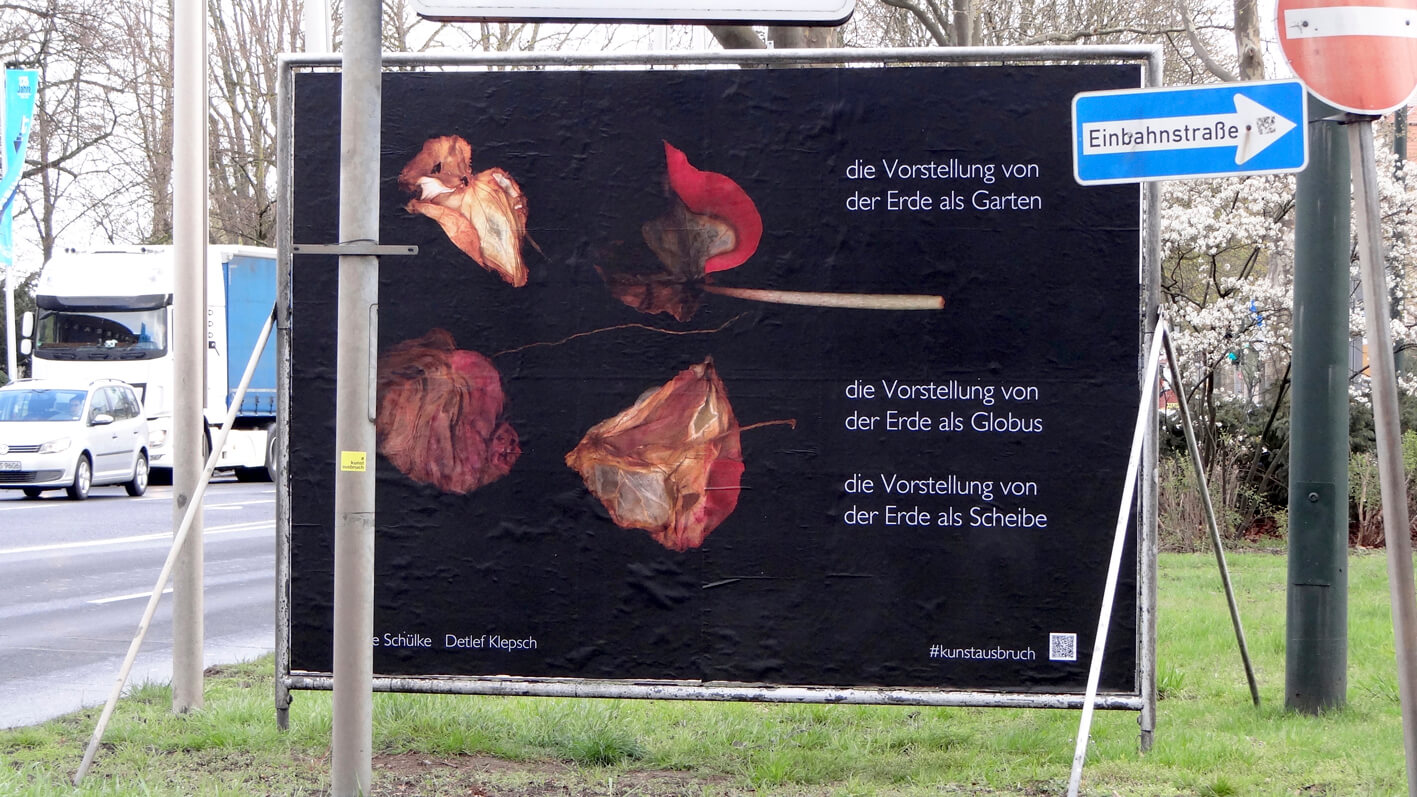an ein Ende geraten (2021)
Poster Campaign and Audio Work with Detlef Klepsch, invited by Stiftung Kunst und Natur, DE
Detlef Klepsch and I deal with everyday life, media and economy. At the center is the idea of reusing things in an artistic context: we use them for a different purpose after use. By reusing things, we say goodbye to them. Because we sense the end of a narrative: the economy of things, focusing on the product that is traded, no longer works. This narrative has no future. Soon, however, a new narrative will have established itself in which the environment will be more important than the thing. People will have learned to think environmentally.
For a few years now, we have been scanning objects against a black background. Many still lifes or natura morta have an evocative character and show transient things: withered plants or a skull. They say: be aware of mortality. Our scans also have such an indicative gesture. They say: Be aware of the limits of growth. As long as we continue to be surrounded by a plethora of things and the still effective narrative of growth, we practice empathy in our everyday lives: we connect with things and say goodbye to them.
In the still life paintings of the 17th and 18th centuries, the objects often lie on a table in a room, with the painted light falling through an invisible window. With us, the light comes from the scanner, there are no surroundings, meaning is created by the constellation of the objects. For us, the special thing about working with the scanner is that it forms a solid, physical connection with the objects. It is light, stage, floor and recording device all in one. For "an ein Ende geraten" we also use it as an instrument: we use an audio recorder to record the noise during a scanning process and edit it together with a voice that speaks a text about the situation: what are the ideas about the earth and what place do humans occupy on the planet?




Scan: Detlef Klepsch, Anne Schülke, photos: Detlef Klepsch